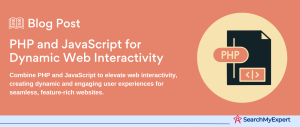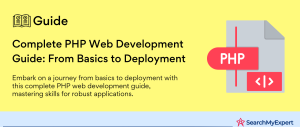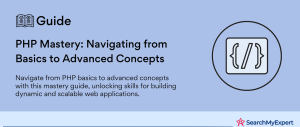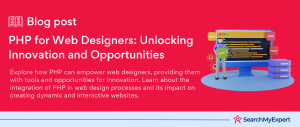PHP Version Migration: Challenges and Solutions
The Evolution of PHP: A Journey to Efficiency and Security
PHP, a cornerstone in the world of web development, has evolved significantly over the years. Keeping PHP versions up-to-date is not just a best practice; it’s a vital step in ensuring the security, performance, and modernity of web applications.
Why Update PHP?
- Enhanced Security:
Newer PHP versions are equipped with robust security features and patches for vulnerabilities found in older versions. - Improved Performance: Each update brings optimization and speed improvements, making applications faster and more efficient.
- Access to Modern Features: Updated versions offer new functionalities, enabling developers to build more complex and sophisticated applications.
The Migration Hurdles
However, transitioning to a newer PHP version is not without its challenges. Common obstacles include:
- Compatibility issues with existing code and libraries.
- Downtime risks during the migration process.
- Resource constraints in testing and deployment.
Identifying Compatibility Issues
Navigating the Maze of Code Compatibility
Upgrading to a new PHP version is like sailing in uncharted waters. It’s crucial to ensure your ship (code) is seaworthy (compatible) before setting sail. Let’s dive into why and how!
Why Compatibility Checks are Crucial
- Prevention is Better Than Cure: Identifying issues beforehand saves time and headaches later.
- Ensuring Seamless Operations: Incompatibilities can break functionalities, leading to a poor user experience.
- Maintaining Code Health:
Regular checks keep the codebase clean and up-to-date.
Common Compatibility Roadblocks
- Deprecated Functions:
These are the sirens of PHP migration, luring with familiarity but leading to potential disaster. - Syntax Evolution:
PHP’s language syntax evolves, and older syntax may not play well with newer versions. - Third-Party Dependencies:
Just like crew members, dependencies must be compatible with the new environment.
Tools to the Rescue
- PHPStan & Psalm: These tools are like the compass and map, guiding through the rough seas of code analysis.
- Code Review:
Sometimes, a human touch is needed to navigate through complex code.
Techniques for Successful Migration
- Comprehensive Code Analysis:
Using tools to identify incompatible code segments. - Dependency Checks: Ensuring all third-party libraries are ready for the new PHP version.
- Incremental Approach: Tackling issues step-by-step to avoid overwhelming the system.
Identifying compatibility issues is a vital step in PHP version migration. It’s about being prepared, staying vigilant, and using the right tools to ensure a smooth transition.
Addressing Legacy Code
Resurrecting the Past: The Legacy Code Challenge
Legacy code in PHP is like an old, mysterious tome – full of wisdom but difficult to decipher. Let’s explore how to bring this ancient script into the modern era.
The Legacy Quandary
- Old and Mysterious: Often poorly documented, legacy code is a puzzle wrapped in an enigma.
- Outdated Practices: What was once cutting-edge is now obsolete, making updates a tricky affair.
Refactoring: The Art of Code Renaissance
- Understanding Before Changing:
Grasp the purpose and functionality before altering a single line. - Incremental Refactoring:
Gradual changes are less disruptive and easier to manage. - Focus on Maintainability: The goal is to make the code easier to understand, modify, and extend.
Modernizing Techniques
- Code Reviews: Bring in fresh eyes to spot issues and suggest improvements.
- Automated Testing: A safety net ensuring changes don’t break existing functionalities.
- Documentation:
Turn the mysterious into the understandable for future developers.
The Vendor Lock-In and Outdated Libraries Conundrum
- Vendor Lock-In:
Being tied to specific vendors or technologies can stifle innovation and flexibility. - Outdated Libraries: They’re like old tools – familiar but not always efficient or safe.
Solutions
- Seek Alternatives:
Explore modern, flexible solutions that reduce dependency on a single vendor. - Update or Replace Libraries:
Like renovating a house, either fix what’s broken or build anew.
Addressing legacy code in PHP migration is a journey of transformation. It requires patience, skill, and a keen eye for detail, leading to a more robust, maintainable, and modern codebase.
Dependency Management
Orchestrating Harmony: Composer Dependency Management
In the symphony of PHP migration, the Composer plays the role of the conductor, ensuring every dependency is in tune with the new version.
The Composer’s Score
- Essential for Harmony: Managing dependencies is crucial for a smooth transition.
- Spotting Dissonance:
Older versions of libraries might not play well with new PHP versions.
Navigating the Compatibility Maze
- Outdated Dependencies:
Like old instruments in an orchestra, they can disrupt the harmony. - Compatibility Checks: Identifying which dependencies are out-of-tune with the new PHP version.
Strategies for a Perfect Composition
- Update with Care:
Ensure each library is compatible with the new PHP version. - Research Alternatives: Sometimes, finding a new library is better than trying to fix the old one.
- Testing:
The rehearsal before the main performance, ensuring everything works together.
The Tools of a Maestro
- Composer:
The baton that orchestrates the entire dependency management process. - Automated Testing:
Ensures that updates don’t break existing functionalities.
Overcoming Challenges
- Finding Alternatives:
Like auditioning new musicians, sometimes new libraries are needed. - Version Conflicts:
Resolving these is key to maintaining the rhythm of development.
Managing Composer dependencies during PHP migration is like conducting an orchestra. It requires attention to detail, an understanding of each component, and a keen ear for harmony. With the right strategies, the migration can turn into a beautiful symphony of well-orchestrated code.
Testing and Deployment
The Final Act: Ensuring a Flawless Show
In the theater of PHP migration, testing and deployment are the final rehearsals before the grand opening.
Testing: The Dress Rehearsal
- Thoroughness is Key:
Test across different versions and environments to catch every possible issue. - Unit Testing: Focuses on individual components – like rehearsing each scene separately.
- Integration Testing:
Ensures all parts of the application work together seamlessly. - User Acceptance Testing:
The final test, with the audience (users) giving their verdict.
Deployment: The Big Night
- Rollback Strategies:
Have an exit strategy, like a safety net under a high-wire act. - Considerations for Deployment: It’s about timing, coordination, and ensuring a smooth transition.
The Art of Deployment
- Staged Rollout: Like a soft opening, test the waters before a full launch.
- Monitoring Post-Deployment:
Keep a close eye on performance and user feedback. - Communication is Crucial:
Keep all stakeholders informed throughout the process.
Testing and deployment in PHP migration are the culmination of all the hard work. They require meticulous planning, thorough execution, and the flexibility to adapt as needed. Done right, they ensure the final product is not just functional but a masterpiece of digital craftsmanship.
Security and Optimization
Fortifying and Streamlining: The Final Touches
In the world of PHP migration, the last steps involve bolstering security and honing performance.
Security: The Digital Fortress
- Enhanced Security Features: New PHP versions bring advanced security measures.
- Migration Security Considerations:
Careful planning is needed to maintain security integrity. - Secure Coding Practices:
The cornerstone of a robust digital fortress.
Optimization: The Need for Speed
- Performance Improvements: Newer PHP versions are not just secure but also faster.
- Optimization Techniques: Like tuning a sports car for peak performance.
Strategies for a Secure and Swift Application
- Security Audits:
Regular checks to find and fix vulnerabilities. - Code Profiling for Optimization:
Identifying bottlenecks and areas for improvement. - Leveraging New Features: Utilizing the latest PHP features for better performance.
Focusing on security and optimization during PHP version migration is crucial. It’s about building a fortress while ensuring the machinery inside runs smoothly and efficiently. With these final touches, your application is not just updated but also upgraded.
Challenges and Solutions
The Road Traveled: A Recap of PHP Migration
The journey of migrating to a new PHP version is challenging but immensely rewarding. Let’s recap:
- Compatibility Checks:
Identifying potential issues before they become problems. - Addressing Legacy Code:
Modernizing and refining for the future. - Dependency Management: Ensuring all components are in sync.
- Testing and Deployment:
The critical steps to ensure a smooth transition. - Security and Optimization:
Enhancing the fort and tuning the engine for peak performance.
The Benefits Unpacked
- Enhanced Security and Performance: Protecting your application while making it faster.
- Access to New Features: Staying current with the latest PHP advancements.
- Improved Maintainability:
A cleaner, more efficient codebase.
Resources for Your Journey
- Official PHP Documentation: The map to guide you.
- Tutorials and Guides: PHP.net Tutorials, PHP The Right Way.
- Community Forums:
Stack Overflow, PHP Community.\
Conclusion
PHP version migration is a pivotal step for enhancing the security, performance, and maintainability of web applications. From addressing compatibility issues and legacy code to managing dependencies, and ensuring rigorous testing and deployment – each step is crucial. The journey, while intricate, is rewarding, leading to a more robust, efficient, and secure application. With resources like official documentation, tutorials, and community support, the path to migration is well-supported. Embrace this upgrade not just as a necessity, but as an opportunity to future-proof and refine your PHP applications for the challenges of tomorrow’s digital landscape.
Experience cutting-edge web development with our PHP Development Service Company.
Table of Contents
Toggle






